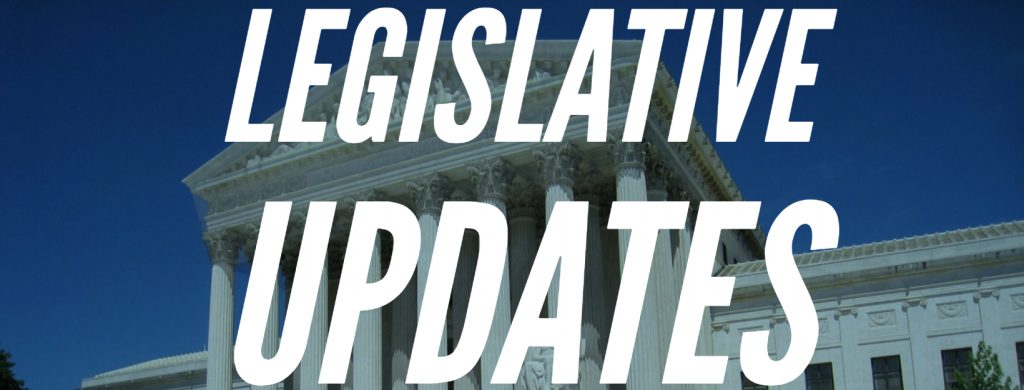
SEP for DSNP + LIS Changes in 2019 (Part D and MAPD Plans)
In 2019, Medicare beneficiaries who are dual eligible (Dual-eligible (DE) means a beneficiary who is enrolled in both Medicare and Medicaid.) or eligible for LIS (Low income subsidy (LIS) means the subsidy that a beneficiary receives to help pay for prescription drug coverage) will no longer have a continuous month to month SEP. Instead, the DSNP/LIS SEP may be used only once per calendar quarter during the first nine months of the year. This is to ensure that Part D plan sponsors are better able to administer benefits, including coordination of Medicare and Medicaid benefits. (An individual is not eligible for this special enrollment period if he or she has been notified that he or she has been identified as a “potential at-risk beneficiary” or “at-risk beneficiary” for misuse or abuse of frequently abused drugs.)
Source: 4-2-18 (CMS-4182-F) CMS Finalizes Policy Changes and Updates For Medicare Advantage and the Prescription Drug Benefit Program for Contract Year 2019
https://www.cms.gov/Newsroom/MediaReleaseDatabase/Fact-sheets/2018-Fact-sheets-items/2018-04-02.html
Restoration of the Medicare Advantage Open Enrollment Period January 1st through March 31st 2019
The 21st Century Cures Act eliminates the existing MA disenrollment period that currently takes place from January 1st through February 14th of every year and, effective for 2019, replaces it with a new Medicare Advantage open enrollment period (OEP) that will take place from January 1st through March 31st annually. The new OEP allows individuals enrolled in an MA plan, including newly MA-eligible individuals, to make a one-time election to go to another MA plan or Original Medicare. Individuals using the OEP to make a change may make a coordinating change to add or drop Part D coverage.
Allows:
- MA-Only to MA-Only
- MA-Only to MA-PD
- MA-PD to MA-Only
- MA-PD to MA-PD
- MA-Only or MA-PD to Original Medicare without PDP
- MA-Only or MA-PD to Original Medicare with PDP
- Switching between Plan benefit packages (PBP’s) of one organization
- Beneficiaries in original Medicare and Cost plans cannot use the new OEP, regardless of Part D coverage. Also enrollment into a cost plan during OEP is not allowed.
- MA Plans can choose to not accept OEP requests.
“In addition, an MA organization has the option under section 1851(e)(6) of the Act to voluntarily close one or more of its MA plans to OEP enrollment requests. If an MA plan is closed for OEP enrollments, then it is closed to all individuals in the entire plan service area who are making OEP enrollment requests. All MA plans must accept OEP disenrollment requests, regardless of whether or not it is open for enrollment.”
- Marketing to MA enrollees is prohibited during the OEP. (section II.B.5.c of the final rule)
Knowingly target or send unsolicited marketing materials to any MA enrollee during the Open Enrollment Period.
Source: https://www.cms.gov/Newsroom/MediaReleaseDatabase/Fact-sheets/2018-Fact-sheets-items/2018-04-02.html
2019 – At Risk Beneficiaries Face Potential Lock In for Frequently Abused Drugs
- Implementation of (CARA) Comprehensive Addiction and Recovery Act of 2016
- In 2019, Medicare Part D plans will be permitted to have a “lock in” feature to limit at risk beneficiaries access to frequently abused or misused drugs.
- Prescriber lock in would limit at-risk beneficiaries access to coverage for frequently abused drugs to those that are prescribed by a specific pharmacy on provider.
- Locking in to one provider allows for easier tracking of usage.
- Lock in would only apply to frequently abused drugs. NOT all of their drugs.
“Beginning with plan year 2019, Part D sponsors, including sponsors of EGWPs (employer group waiver plans), may adopt drug management programs that meet the requirements we are finalizing in this rule. Under a Part D prescription drug management program, sponsors may implement a prescriber and/or pharmacy lock-in or beneficiary-specific POS claim edit for frequently abused drugs with respect to an at-risk beneficiary.”
2019 Donut Hole Changes For Brand Name Drugs
- Based on the Bipartisan Budget Act of 2018 enacted February 2018, the brand name donut hole discount will increase to 75% in 2019. (Pharmaceutical industry will be responsible for 70% and your Part D plan is responsible for the other 5%) Accelerated because 70/30 was planned for 2019.
- The generic donut hole was not affected by the Bipartisan Budget Act of 2018. The 2019 generic donut hole discount is 63%-you pay 37%
- Reminder that CMS estimates if you are spending $318 a month in retail drug cost, you will reach the donut hole.
Source: https://www.cms.gov/Medicare/Health-Plans/MedicareAdvtgSpecRateStats/Downloads/Announcement2019.pdf
Potential Changes in 2019 Marketing Guidelines
The final 2019 Marketing Guidelines should be out in July but some possible changes are being considered. Below are proposed changes to existing policy that are being considering for contract year 2019:
Clarifying that business reply cards that do not mention plan specific benefits do not need to be submitted into HPMS.
- Removing the restriction on requesting email addresses when asking for referrals from enrollees.
- Allowing Plans/Part D Sponsors to announce that a nominal gift may be offered to enrollees for a referral when soliciting leads.
(Adding the permission to announce a nominal gift in exchange for a lead to allowing those leads to include an email address could have major impact on marketing opportunities.)
- Updating the font size rule to only apply to required documents.
- Aligning the delivery date of the EOC with the regulatory requirements for all Plans and Part D Sponsors, including D-SNPs.
- Permitting agents to disseminate contact information at educational events.
- Clarifying that it is not a violation of CMS marketing requirements if contracted providers notify their patients that the contract status between the provider and the Plan/Part D Sponsor is changing.
- Adding definitions to the current Appendix 1 for agents/brokers, and misleading marketing materials, statements, and activities.
- Updating current Appendix 5 to eliminate non-regulatory disclaimers and streamlining others based on consumer testing, such as disclaimers when advertising sales/marketing events, and when using non-benefit/non-health service providing third party materials.
- Consolidating many disclaimers into a pre-enrollment checklist and requiring plans to disseminate the checklist one time with the Summary of Benefits, instead of requiring the disclaimers on multiple marketing materials.
(This streamlines the compliance review process)
Last year CMS finalized the marketing rules in July: https://www.cms.gov/Medicare/Health-Plans/ManagedCareMarketing/Downloads/CY-2018-Medicare-Marketing-Guidelines_Final072017.pdf
CMS has already issued a final rule on other changes for the 2019 contract year, but they also released a request for input on the final rule so there may be some changes to this in the coming months: https://www.federalregister.gov/documents/2018/04/16/2018-07179/medicare-program-contract-year-2019-policy-and-technical-changes-to-the-medicare-advantage-medicare
Source: DATE: April 12, 2018 TO: Medicare Advantage Organizations Medicare Advantage – Prescription Drug Organizations Section 1876 Cost Plans Prescription Drug Plan Sponsors Employer/Union-Sponsored Group Health Plans Medicare-Medicaid Plans FROM: Kathryn A. Coleman, Director Medicare Drug & Health Plan Contract Administration Group Amy Larrick Chavez-Valdez, Director Medicare Drug Benefit and C & D Data Group SUBJECT: Request for Input on the 2019 Medicare Communications and Marketing Guidelines
2019 MA & Part D Plans Get Increase in Reimbursement
2019 Medicare Advantage Capitation Rates and Medicare Advantage and Part D Payment Policies and Final Call Letter
Medicare Advantage plans get a 3.4% pay hike in 2019. This is well beyond the early call letters that had indicated a 1.84% increase. (2018’s increase was 2.95%)
When you add that to the fact that additions are made to compensate for sick vs. healthy individuals, some estimate it to translate into an increase of over 6%. (2019 will be a strong growth year for Medicare Advantage.)
This funding makes insurers attractive to retailers looking for ways to boost income and find new ways to attract customers.
This could result in the following:
- More plans in the market
- More benefits built into plans
- More $0 plans
- Fewer SAR’s
Source: https://www.cms.gov/Medicare/Health-Plans/MedicareAdvtgSpecRateStats/Downloads/Announcement2019.pdf
